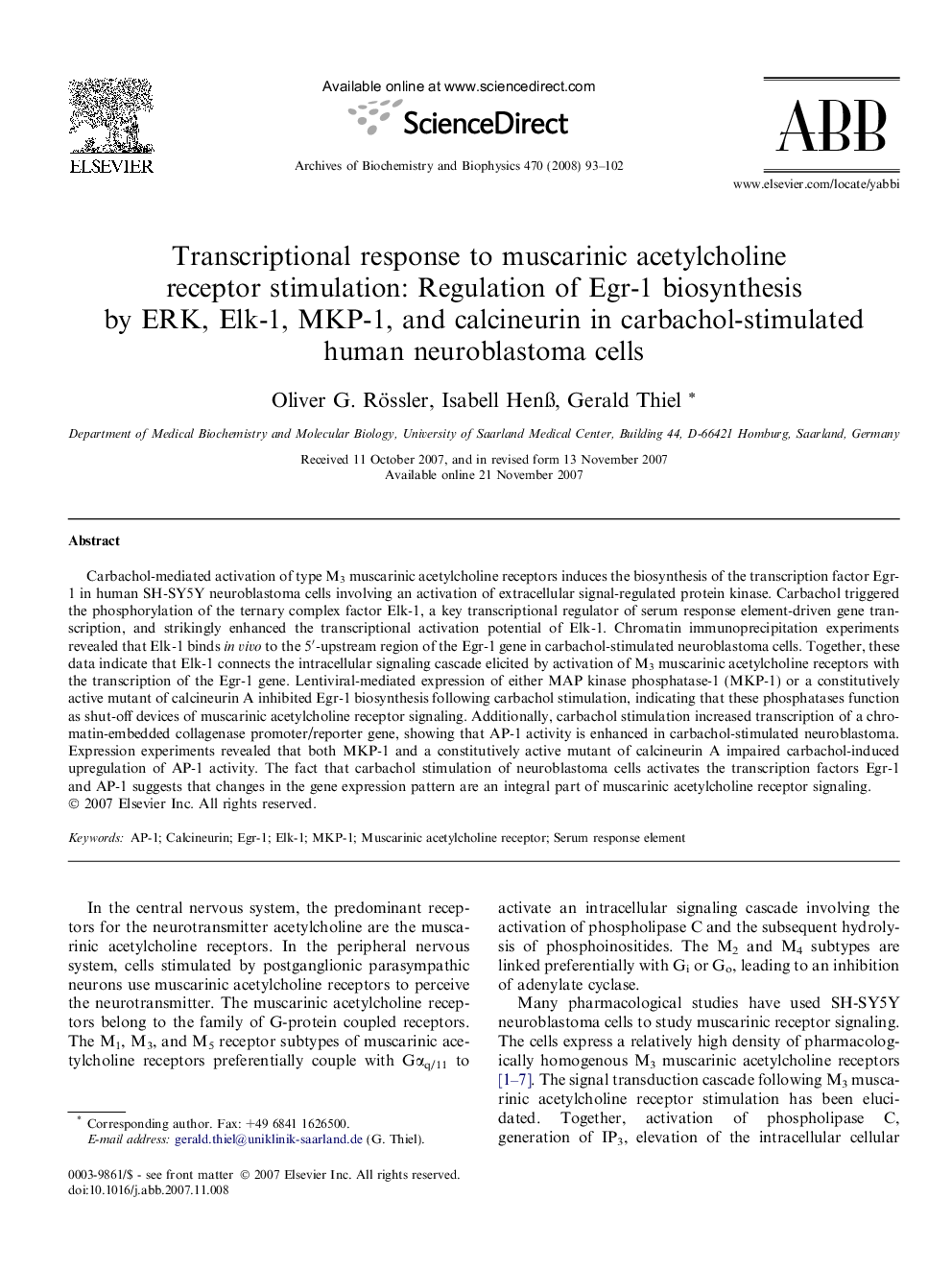| Article ID | Journal | Published Year | Pages | File Type |
|---|---|---|---|---|
| 1926886 | Archives of Biochemistry and Biophysics | 2008 | 10 Pages |
Carbachol-mediated activation of type M3 muscarinic acetylcholine receptors induces the biosynthesis of the transcription factor Egr-1 in human SH-SY5Y neuroblastoma cells involving an activation of extracellular signal-regulated protein kinase. Carbachol triggered the phosphorylation of the ternary complex factor Elk-1, a key transcriptional regulator of serum response element-driven gene transcription, and strikingly enhanced the transcriptional activation potential of Elk-1. Chromatin immunoprecipitation experiments revealed that Elk-1 binds in vivo to the 5′-upstream region of the Egr-1 gene in carbachol-stimulated neuroblastoma cells. Together, these data indicate that Elk-1 connects the intracellular signaling cascade elicited by activation of M3 muscarinic acetylcholine receptors with the transcription of the Egr-1 gene. Lentiviral-mediated expression of either MAP kinase phosphatase-1 (MKP-1) or a constitutively active mutant of calcineurin A inhibited Egr-1 biosynthesis following carbachol stimulation, indicating that these phosphatases function as shut-off devices of muscarinic acetylcholine receptor signaling. Additionally, carbachol stimulation increased transcription of a chromatin-embedded collagenase promoter/reporter gene, showing that AP-1 activity is enhanced in carbachol-stimulated neuroblastoma. Expression experiments revealed that both MKP-1 and a constitutively active mutant of calcineurin A impaired carbachol-induced upregulation of AP-1 activity. The fact that carbachol stimulation of neuroblastoma cells activates the transcription factors Egr-1 and AP-1 suggests that changes in the gene expression pattern are an integral part of muscarinic acetylcholine receptor signaling.
